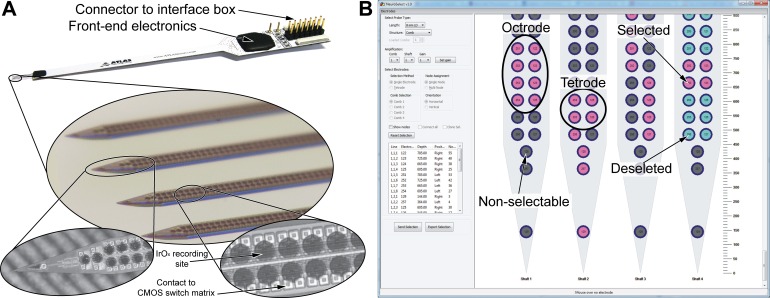Fig. 1.
The 4-shaft, 1,028-site electronic depth control (EDC) probe and the graphical user interface of the NeuroSelect software used to control the electrode selection. A: the probe design for acute recordings comprises the 4-shaft silicon comblike probe connected to a printed circuit board, the front-end electronics, and the connector to the interface box (top). Each of the 8-mm-long shafts (middle) comprises 257 IrOx recording sites evenly distributed in 2 columns along the entire shaft length with an electrode pitch (center to center) of 60 μm (bottom right; only a small section of the shaft is shown). All electrodes have a circular shape except for the triangular-shaped electrode located at the tip of the probe (bottom left). The CMOS-based switching electronics are located underneath the recording sites. Note that the probe shown has a pointy tip, whereas probes used in acute experiments had a chisel-shaped tip. B: electrode selection panel of the dedicated control software (NeuroSelect) used to address the user-defined recording sites. Several probe types with different shaft lengths can be selected from a predefined list (top left). Eight individual recording sites can be selected on each shaft. Selected, deselected, or nonselectable electrodes are color coded. The tetrode selection method and the clone selection option can accelerate the process of electrode selection (middle left). The selection of tetrodes or octrodes is recommended for single-unit activity recordings and subsequent spike sorting.

